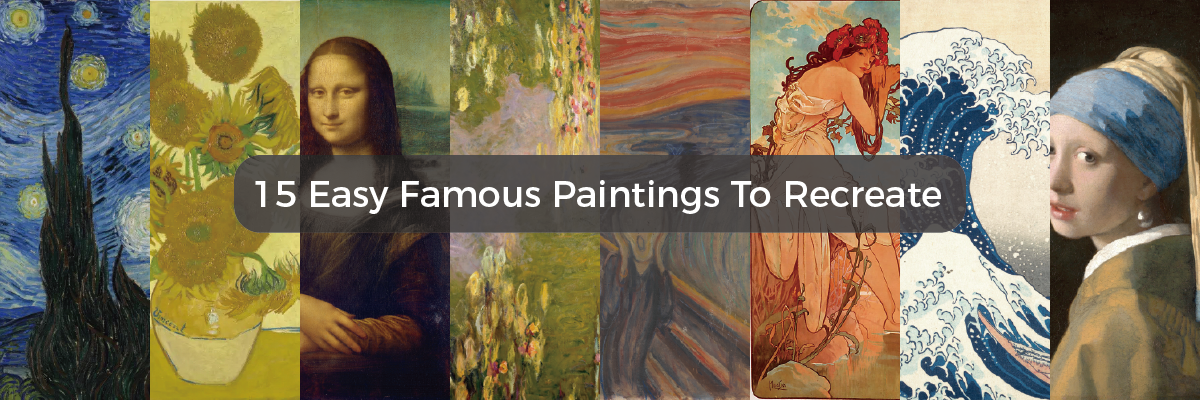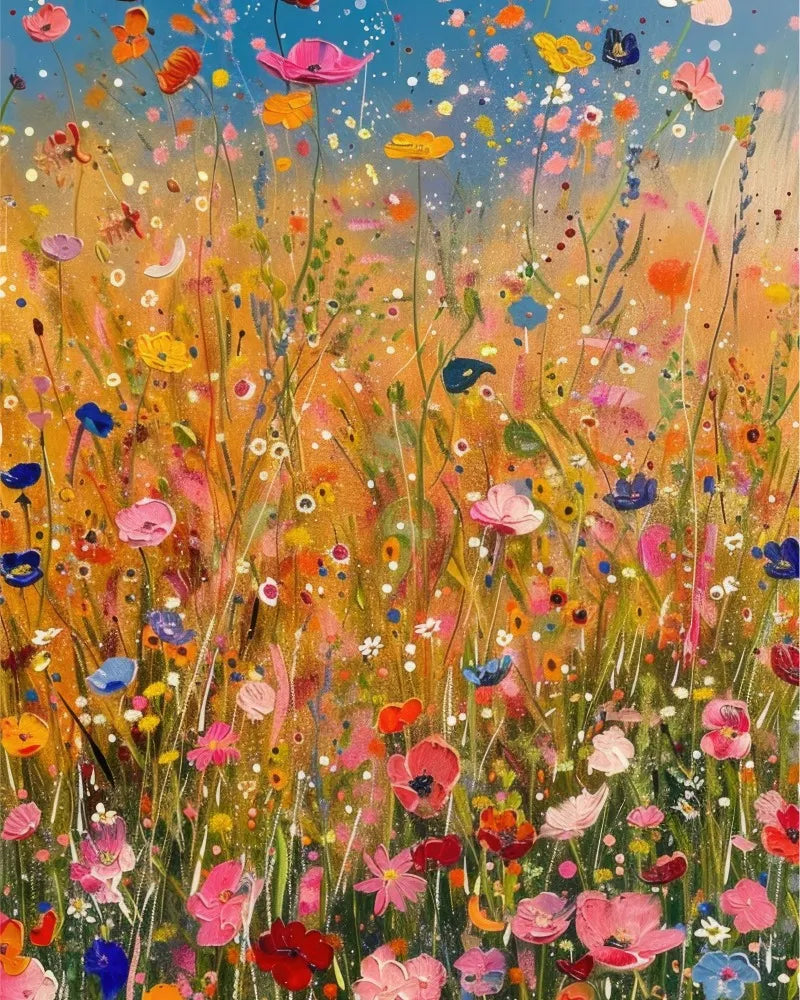In the pantheon of art history, few paintings are as instantly recognizable and universally admired as Claude Monet’s Bridge Over a Pond of Water Lilies. This iconic masterpiece, created in 1899, stands as one of the most celebrated works within Monet’s extensive water lily series. But what is it about this tranquil depiction of a pond with water lilies, crossed by a simple Japanese bridge, that continues to captivate viewers more than a century after its creation?
Is it the harmony of colors, the rhythm of brushstrokes, or the ethereal atmosphere it creates? This article explores the deeper layers behind an Impressionist painting of a pond full of waterlilies, examining its artistic significance, context, and enduring appeal.

Table of content
- 1. What Is the Story Behind Monet's Water Lily Pond?
- 2. How Does Monet's Use of Color and Light Define This Masterpiece?
- 3. What Symbolism Does the Bridge Convey in Monet's Painting?
- 4. How Did Monet Explore Variations on the Water Lily Theme?
- 5. What Is the Influence and Legacy of Monet's Water Lily Series?
- 6. What Experience Does Viewing Monet's Painting Evoke?
- 7. Why Do We Continue to Cherish Monet’s Water Lily Pond Today?
- 8. How Can You Bring Monet’s Masterpiece to Life with Your Own Hands?
What Is the Story Behind Monet's Water Lily Pond?
Claude Monet, a leading figure of the Impressionist movement, found boundless inspiration in the natural beauty surrounding his home in Giverny, France. In the 1890s, Monet began cultivating his famous water garden, a project that would come to define the later phase of his artistic career.The water lily pond in his garden, designed with a Japanese-style bridge arching gracefully over its surface, became his sanctuary. This private world, rich in reflection and nuance, offered the perfect muse for an artist devoted to capturing the ephemeral effects of light and atmosphere.“Bridge Over a Pond of Water Lilies” is one of approximately twelve large-scale canvases Monet painted in 1899 featuring this now-iconic scene. The painting invites the viewer into a dreamscape, where the bridge hovers over the mirrored surface of the pond, and blooming lilies float silently like celestial bodies adrift.

How Does Monet's Use of Color and Light Define This Masterpiece?
To truly appreciate the depth of this pond painting, one must understand the principles of Impressionism. Rather than emphasizing precise details, Monet sought to convey the fleeting qualities of light, mood, and movement.In this particular work, the palette is luminous yet serene—rich greens, soft blues, and dashes of white and pink from the famous waterlily painting motifs. The colors are not confined to outlines but dance across the canvas in loose, expressive strokes. The bridge is painted not with architectural rigidity but as a soft arc, emerging subtly from the foliage, a suggestion more than a declaration.This treatment invites contemplation. Rather than presenting a scene, Monet creates a sensation—a moment captured in time, where perception itself becomes the subject.

What Symbolism Does the Bridge Convey in Monet's Painting?
The original Monet bridge, inspired by Japanese aesthetics, is more than just a structural element. In Monet’s hands, it becomes a symbol—a connector between realities, perhaps even between the conscious and the subconscious.In Eastern traditions, bridges often signify transition, spiritual passage, or enlightenment. Monet, a Francophile fascinated by Japanese woodblock prints (ukiyo-e), integrates this symbolic resonance into his own Western context. The bridge, in “Bridge Over a Pond of Water Lilies,” becomes both literal and metaphorical, drawing the viewer across the waters of the mind.
How Did Monet Explore Variations on the Water Lily Theme?
Though this painting stands on its own, it is also part of a broader narrative: the Monet lilies pond series. Over the decades, Monet painted his waterlily pond more than 250 times, capturing it under various lighting conditions and seasons.Each painting reveals a different facet of the same subject. Sometimes the sky reflects in the water; other times, the foliage dominates. In “Bridge Over a Pond of Water Lilies,” the bridge anchors the scene, giving structure to what could otherwise dissolve into abstraction.This theme—repetition with variation—aligns Monet with modern artists who see value in studying the same object under changing circumstances. Like a composer reinterpreting a melody, Monet explored endless visual harmonies within the confines of his garden.
What Is the Influence and Legacy of Monet's Water Lily Series?
The legacy of pond paintings by Monet cannot be overstated. “Bridge Over a Pond of Water Lilies” now resides in the Metropolitan Museum of Art in New York City, where it draws millions of visitors each year. Art historians credit these works with laying the foundation for modern abstraction, influencing later giants like Mark Rothko and Jackson Pollock.Furthermore, the painting has become a cultural touchstone. It’s referenced in films, literature, fashion, and interior design. Its calming palette and reflective mood make it a favorite among collectors and casual art lovers alike. The phrase “pond painting” often conjures up Monet’s gentle brushwork, even in discussions far removed from traditional fine art.

What Experience Does Viewing Monet's Painting Evoke?
To stand before “Bridge Over a Pond of Water Lilies” is to encounter more than pigment and canvas. It’s to step into another world—a world where time slows, the air stills, and the eye wanders, gently, across lilies and ripples. What makes it so unforgettable? Perhaps it's the way Monet painted not just what he saw, but what he felt. His garden wasn't just a place—it was an emotion, translated into color and form.Every glance at this impressionist painting of a pond full of waterlilies reveals something new: a reflection you didn’t notice before, a nuance of color that changes with the light. It’s a living painting, ever evolving in the mind’s eye.
Why Do We Continue to Cherish Monet’s Water Lily Pond Today?
So, what makes Bridge Over a Pond of Water Lilies such a lasting masterpiece? It's the quiet power of nature distilled through Monet's unique vision. It’s the bridge between realism and abstraction, between the outer world and inner emotion. It's an invitation to pause, reflect, and find beauty in simplicity.In a world that often moves too fast, Monet’s painting reminds us to slow down—to notice the light on water, the curve of a leaf, the silence beneath a pond full of waterlilies.Whether you're an art scholar or someone seeing the painting for the first time, one thing is certain: this is not just a pond painting. It’s a portal. And once you step through, you may never see nature—or art—the same way again.
How Can You Bring Monet’s Masterpiece to Life with Your Own Hands?
If you've ever dreamed of capturing the serene beauty of Monet's "Bridge Over a Pond of Water Lilies" with your own hands, 1001 Canvas offers an accessible and fulfilling way to do just that. Their premium paint by numbers kits are designed for artists of all skill levels, providing everything you need to recreate masterpieces or craft your own unique artwork.
Each kit includes a high-quality pre-printed canvas, a set of numbered acrylic paints, and brushes of various sizes, ensuring a smooth and enjoyable painting experience. Whether you're a beginner or an experienced artist, these kits allow you to immerse yourself in the creative process, much like Monet did in his garden at Giverny.
For those looking to personalize their artistic journey, 1001 Canvas also offers custom paint by number kits. By simply uploading your favorite photo, you can transform cherished memories into beautiful paintings, making for meaningful gifts or personal keepsakes.
Engaging in paint by numbers not only provides a relaxing pastime but also deepens your appreciation for the nuances of color and composition found in Impressionist works. It's a bridge between observing art and creating it, inviting you to experience the tranquility and satisfaction that comes with bringing a canvas to life, one numbered section at a time.














 https://1001canvas.com/blogs
https://1001canvas.com/blogs






